There are many pre-cut mats on the market. Their opening sizes include 4”x6”, 5”x7”, 8”x10”, 11”x14”, 12”x16”, 16”x20”, 18”x24”, and 20”x24”. Three most popular colors are black, white, and ivory. They are neutral colors
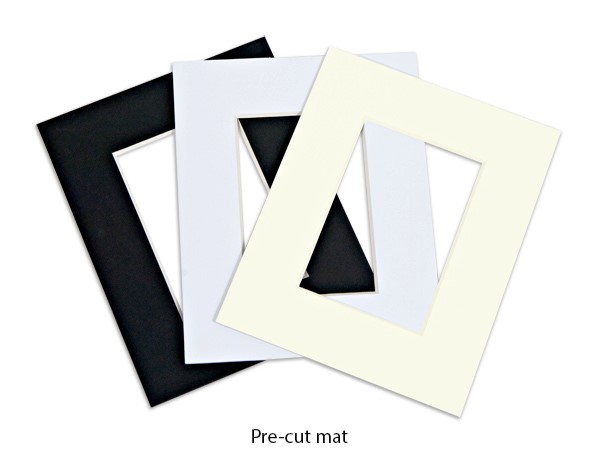
Pre-cut mats are relatively cheap since they are mass-produced. They are convenient since it takes only a few minutes to mount a picture on a pre-cut mat and you have a nice looking picture. These are the reasons why some photographic associations often ask their members to purchase pre-cut mats to prepare their pictures for exhibition. Mats make pictures look nicer and increase their value and quality.
However, pre-cut mats have a very serious disadvantage. There are very few cases where your pictures readily match pre-cut mats. You often have to crop your pictures to fit pre-cut mats. By doing so, you unintentionally change your picture composition and often making it worse. For this reason, I always use uncut mats and cut openings to fit my pictures, using simple mat cutting tools. The whole process takes less than five minutes. Custom-made mats look the same as machine-pre-cut mats.
The most popular size of pre-cut mat for exhibition is 16”x20” with 11”x14” opening. In the following example, my Nauset Lighthouse picture has a dimension of 9.3”x14”. If I mount this picture on this 16”x20” pre-cut mat with 11”x14” opening, there is a 1.7” gap at the bottom.
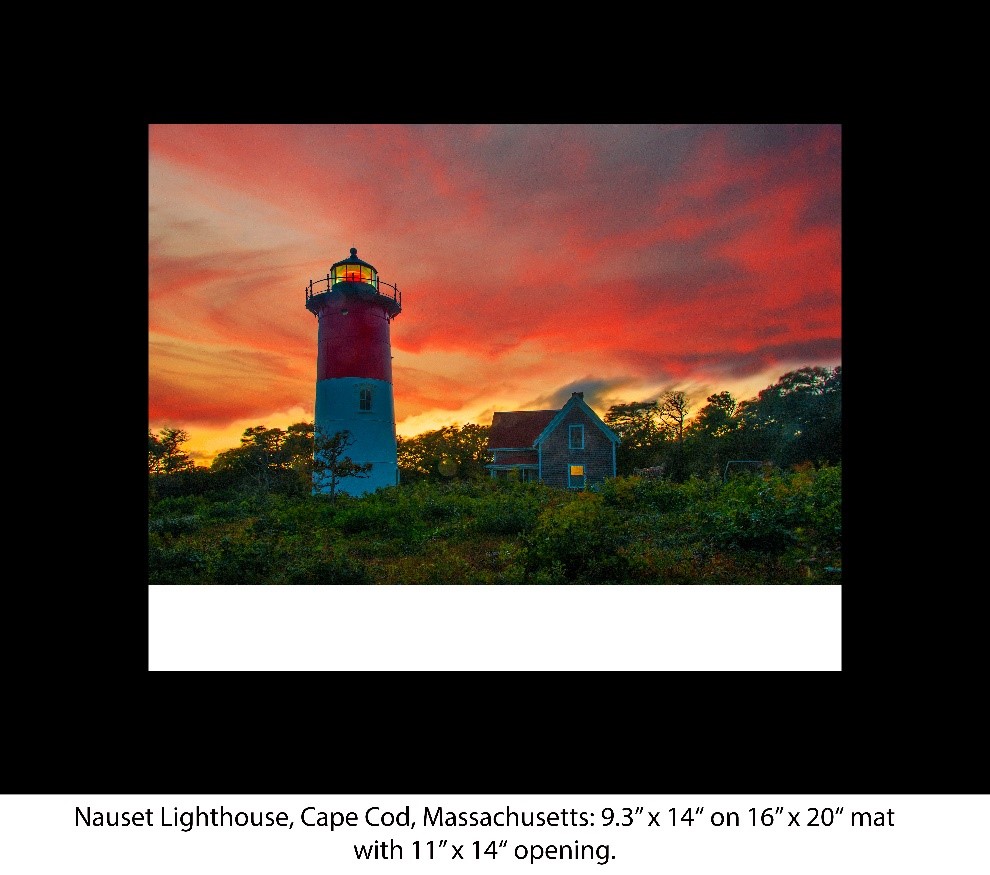
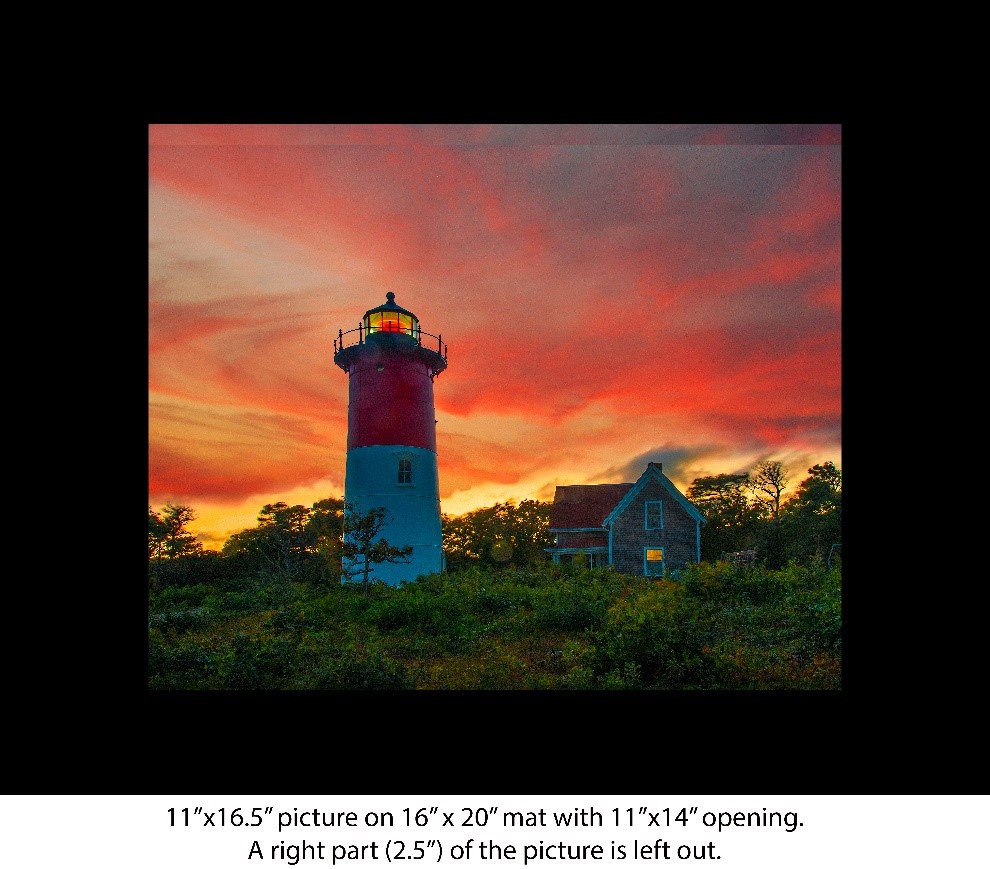
In theory, there are two ways to fill this gap.
(1) Extend the height of the picture from 9.3” to 11” and the width from 14” to 16.5 if I want to keep the same dimension proportion of the picture (that is the same composition). In this case part of the picture goes beyond the opening. This means that it is left out of the picture.
(2) Enlarge the bottom of the picture by extending its height from 9.3” to 11” and keep the same 14” width. As a result, I have to show you an area of weed and bushes that I wish to hide. I would like viewers to focus on the lighthouse and beautiful sky at sunset instead of the dark area at the bottom.
In both cases, I have to change the size of my picture and consequently change its composition to fit my picture into a pre-cut mat. Obviously both ways are wrong. The best solution is to cut mat by ourselves according to the picture dimension.
In addition, if I send my digital picture to some photo processing centers for printing where they also use standard print sizes similar to pre-cut mats, the risk is that the machine or its operator may not know the rule of thirds and how I want to crop the picture. As a result, they may move the lighthouse around or remove it from the picture. The best way is to resize the picture on your computer before printing since custom print is expensive.
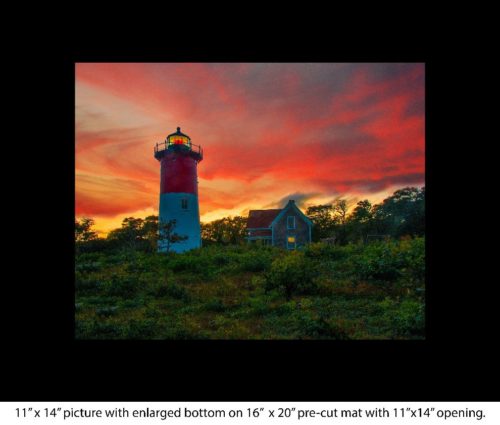
It’s worth mentioning that the size of your print depends on the image size. If you want a nice looking print of about 11”x14”, your image size should have a minimum of 14 MP with a resolution of 300 pixels/inch. Here is my calculation:
11” x 300 pixels/inch = 3,300 pixels.
14” x 300 pixels/inch = 4,200 pixels.
3,300 pixels x 4,200 pixels = 13,860,000 pixels.
I hope after reading this simple and basic article, you understand why you should not crop your beautiful pictures to fit them into pre-cut mats. You cut mat to fit your picture, not the other way around.
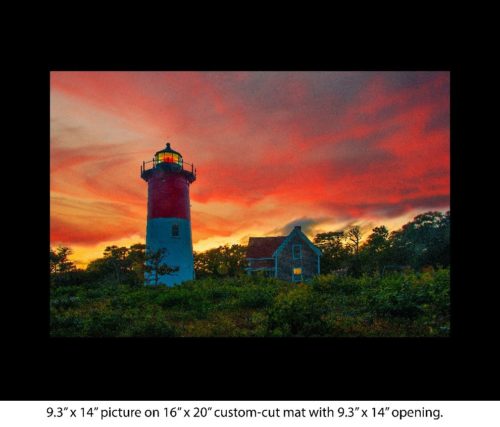
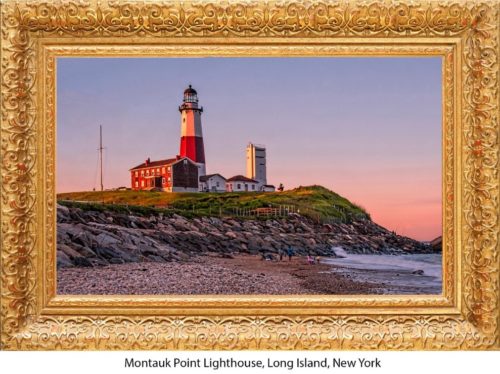
Mat cutters and accessories are available online and at art supply stores for about $100 or less. This cost is equivalent to the amount of money you would have to pay a frame store after ordering a few custom-cut mats. Since the mat cutting equipment is relatively cheap and efficient, I do not recommend you to use a utility knife and a wooden ruler to cut mat. This is a really good investment for those who participate in photo exhibitions often or from time to time. This mat-cutting equipment does not only save you money, but also save you a lot of time. Custom mat-cutting does not only cost a lot more but also requires you to wait for at least one to a few days. There is a larger and fancier kind of mat-cutters as opposed to hand-held type, which can cut larger and even double mats.
There are many different kinds of mat board. They can be grouped in three categories based on the material: (1) Wood pulp: least expensive but not acid-free, available in many colors. Lignin is found in wood pulp and cause mat to yellow and become brittle; (2) Alpha cellulose: less expensive than museum quality rag mat; (3) Cotton: acid free, never harm artwork as long as it is framed, available in few colors. Museum grade mats are generally made from cotton. Moreover, mat board is also measured by a number of plies. A 4-ply mat is 1/16 inch thick. A 8-ply mat is 1/8 inch thick. In general, the thicker the mat board, the better the quality.
Uncut mats can be purchased online. A package of 50 uncut acid-free 16” x 20” mats costs around $50. Shipping is usually free. Packages of 100 mats are also available. For artwork you should use cotton mats.
This article was contributed by IPS member Khai Nguyen